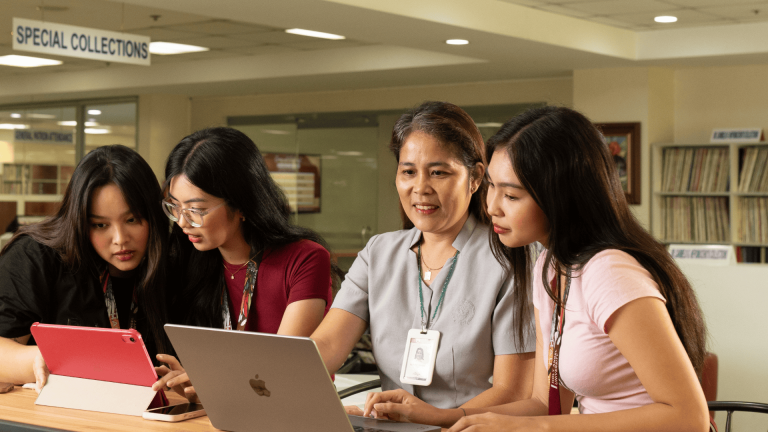Tech, flexibility & supports: How to stratify student success & engagement in the Australian & NZ higher-ed sector
Technology and supporting psychological well-being play huge roles in student success in the Australian higher education sector.
These are some of the key findings of the comprehensive 2022 State of Student Success and Engagement in Higher Education. It drew on an Instructure the makers of Canvas survey with Hanover Research with more than 7,500 students, administration, and faculty staff in higher education across 23 countries. The study, conducted in July 2022, included 380 participants from Australia.
Here are the big questions covered:
- What is the value of higher education in today’s world?
- What does success look like for both students and institutions?
- What is the post-pandemic perception of online learning and the use of digital materials?
- How are socio-economic and mental well-being factors influencing student success and what can be done?
It’s a critical time for the Australian higher education sector. According to IBISWorld, the market size declined faster than the economy overall. In 2022, the sector was worth $34.1 billion, a 2.9% decline over the past 12 months. For the 2022 academic year, NSW, Australia’s most populous state, recorded its highest number of universities posting losses. Part of this was due to the effects of the pandemic, which saw a 5.3% decrease in domestic enrolments in 2022 - the first decline in two decades. There were also 1.2% fewer international students, according to the Audit Office of NSW.
So what insights from 2022 can help universities improve student success, a key driver for sustainability?
In a recent webinar, higher-education leaders from Australia and New Zealand discussed the findings of the State of Higher Education survey. On the panel were Instructure’s Vice-President of International Marketing, Edward Bray (chair), Dr Karin Barac, Senior Manager, Learning Futures at Griffith University, in Queensland, and Liz Bishara, Director, Student Hub at Auckland University of Technology in New Zealand. Dr Barac has 20 years’ experience in technology implementation, while Bishara is on the board of the Association for Tertiary Education Management in Australasia.
Student demand for flexibility and convenience
Australian students said technology is crucial to their learning and were clear on their preferences, saying:
- I want to take some of my courses as a combination of in-person and online (69%)
- I want more digital materials and digital resources in my courses (64%)
- I want to take some of my courses in a fully online format (59%), and
- I want more technology to use in my fully in-person courses (54%).
The survey also showed most faculty members wanted to teach some courses either fully online or hybrid, the biggest change since the previous report, says Griffith University’s Dr Barac.
“We’ve seen more flexibility with online learning delivery, but there’s a real challenge between student and staff perceptions about what it means to be engaged fully online,” she said.
“Both staff and students have a higher expectation of the technology. They want it to be seamless and visible like within a single platform rather than going to multiple platforms and apps.”
This can be a design challenge for institutions starting their journey with a learning management system (LMS), though.
Meanwhile, Bishara, from Auckland University of Technology, said despite a “big return to campus” in 2022, student demand rose for online course activity with “Netflix functionality”.
“The demand for all online learning likely speaks to some pressures we’ve seen around the job market, employability and the cost of living here in Aotearoa [New Zealand]. Flexible learning allows students to remain in employment while continuing their programs,” she said.
The NSW audit office report found 21% of higher-education courses were conducted mostly online in 2022 in the state, compared to 59% the previous year. Meanwhile, 43% of courses were hybrid in 2022, up from 33% in 2021.
Spotlight on career readiness and skill-based competencies
In 2022, Australian higher-education students continued their focus on work/career readiness, skill competency and education goals, the Canvas-Hanover Research survey showed. Those categories each ranked above 80%, whereas they were under 70% in 2020.
For context, 79% of domestic graduates found full-time employment in 2022. That national average is a boost from less than 70% the year before.
This focus on integrating work-based learning into degrees has proved “incredibly attractive” for Auckland University of Technology, said Bishara. The institution has built on that approach in health sciences and sees students “deemed job ready at the conclusion of their studies as well as academically qualified”.
But the survey showed a gap between students and university staff on the importance of skill-based competencies: 81% to 86% respectively.
Bishara said: “You can relatively easily develop a new skill, but adjusting the behaviours and who you are as a person can often take a lot longer to learn. That [mix] can have quite a big impact on your ability to move successfully into employment being team-based or as an individual.”
Students tend not to get insights into workplace demands until they begin their careers, she said.
Dr Barac agreed, saying perceptions differed on “what students need and want and then what they think they need and what”.
“That’s the battle of higher education, raising those expectations.”
She also spoke about finding the sweet spot to balance students’ career readiness and skill-based competencies.
“Griffith has wide disciplines based in the humanities. The discussion is about where you embed real career readiness to find the balance of students getting soft and hard skills.”
Tech to boost student success
About eight in 10 Australian students surveyed said they found technology helped them organise their lives more effectively, the State of Higher Education report revealed.
Thanks to the pandemic’s need for online learning, institutions had fast tracked integrating tools into their technology platforms, and the momentum continues.
“The increase around tech training is really fundamental to us upskilling and our ability to seamlessly use the tech and fully integrate that into our practice,” said Bishara.
“We’re going through a large adoption of the Canvas LMS … to prepare us to serve the students of today and to think about the student of tomorrow and the demands they’ll place on us.”
For Dr Barac, the challenge is not to “take up tech for tech’s sake”.
“With educational design, it can be a great piece of tech in one context, but when you try to shift that to a different learning activity or purpose, it may not work in the same way.”
When having the design conversation, think about “what you’re trying to achieve with the learning experience and the context”, she advised.
“I’ve been doing this for 20 years and the conversations and the questions academics ask just get harder because they’re building their knowledge layer by layer and have more challenging design issues,” Dr Barac said.
Her university is also looking to increase training in using tech to overcome “assumptions that students will just know how to use it for learning”. So, institutions should consider if their tech approach preferences early adopters or is more inclusive.
Here’s what Australian institutions offered in the way of technology-engaged pedagogies for staff and students:
- Periodical workshops (from 63% in 2021 to 52% in 2022)
- Tech training (43%, up to 67%)
- Research funding (67% down to 59% in 2022)
- Professional mentorships (37%, rising to 56%), and
- Diversity, equity, and inclusion (DEI) training (jumped from 30% to 52% in 2022).
Prioritising diversity, equity, and inclusion
The survey showed more DEI training was happening.
And, when that flows through to curriculum design and delivery, all students benefit, said Bishara. When Auckland University of Technology made its courses more accessible to students with impairments, the “unexpected gain” was a consistently better learning experience for all students.
“Embedding learner voice in our curriculum design and delivery means we’re now able to offer multiple ways for students to authentically access and engage with the material. We’re confident we understand our learners whether they’re in our classrooms, campus or online.”
AUT has a student advice hub offering ongoing “detailed and deep support” for students, including case management for specialist cohorts. It saves them from tapping into high-cost external services.
“For students with impairments, we do the assessment and academic accommodations as part of their transition to study plan. This affirmative action, before they start learning, helps cut down the barriers. For all our students, we make sure our touchpoints for support are accessible and prompt,” Bishara said.
An LMS such as Canvas can be customised to differentiate for the needs of diverse student populations. It offers a range of features, including closed captioning, multilingual support, and screen reader compatibility. These tools work well to improve the learning experience for students with language barriers or disabilities.
Why well-being matters
The State of Higher Education report also found Australian institutions are taking creative approaches to support student well-being. They offered in-person and virtual counselling, on-campus well-being events, and mental health apps. In other countries, the higher-education sector also offered staff training and mentorship programs.
More locally, Griffith University has a central unit of expertise to help academics systematically embed student well-being activities in the learning and teaching component of their courses.
Dr Barac said: “We’ve also used the opportunity of our move to the Canvas LMS to embed a student support link in every course site that’s actually a warehouse web page with different supports for learning and pastoral care. It deals with the problem of how do you get information in front of students that doesn’t overload them.”
The unit has also been a “good line of defence for academics” for their well-being.
Meanwhile, Bishara said her institution’s approach also recognised that students’ most important relationships at university were often with academics.
“We ensure academic staff members are fully informed to guide students to access different support services and resources.”
Learn more about how an LMS can support your institution’s student success and engagement priorities. Request a personalised demo with one of our expert or download the full report.
Related Content
 meet-canvas-apac-team-christopher.png
meet-canvas-apac-team-christopher.pngBlogs
 philippines_ched_cmo.png
philippines_ched_cmo.pngBlogs
 meet-canvas-apac-team-avi.png
meet-canvas-apac-team-avi.pngBlogs